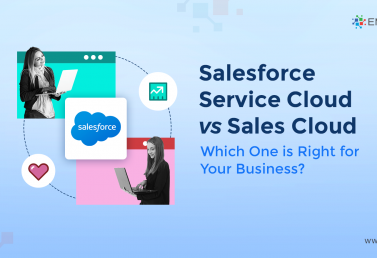Salesforce Pricing: A Comprehensive Guide
Embarking on the journey of integrating Salesforce into your business operations can be both exciting and daunting. The intricate nature of its pricing structure necessitates a thorough understanding of “How does Salesforce pricing work?” In this comprehensive guide, we will meticulously unravel the layers of Salesforce pricing, providing you with clarity and insights to effortlessly navigate through the options.
I. Exploring the Salesforce Editions:
To truly comprehend how Salesforce pricing operates, it is essential to delve into the diverse editions the platform offers. Salesforce caters to businesses of varying sizes, from startups to enterprise-level organizations. Let’s dissect the key editions and their unique offerings:
- Salesforce Essentials: Tailored for small businesses, Salesforce Essentials serves as a streamlined version, offering core CRM functionalities. Priced affordably, it provides a solid foundation for businesses looking to establish customer relationships without breaking the bank.
- Salesforce Professional: Ideal for growing businesses, the Professional edition enhances CRM capabilities with additional features like campaign management and workflow automation. This edition caters to companies seeking scalability and efficiency in their operations.
- Salesforce Enterprise: Catering to mid-sized to large enterprises, Salesforce Enterprise is a comprehensive solution offering advanced customization, analytics, and collaboration features. The scalability of this edition makes it suitable for businesses experiencing rapid growth and evolving needs.
- Salesforce Unlimited: At the top tier, Salesforce Unlimited provides the most extensive set of features, offering unparalleled customization, scalability, and support. This edition is tailored for large enterprises requiring a highly flexible and powerful CRM solution.
Transitioning seamlessly between these editions allows businesses to align their CRM investment with their evolving needs, ensuring optimal utilization and cost-effectiveness.
II. Unraveling the Salesforce Pricing Structure:
Now that we’ve explored the editions, let’s meticulously dissect the Salesforce pricing structure to answer the pivotal question: “How does Salesforce pricing work?”
- User-Based Pricing Model: Salesforce primarily employs a user-based pricing model, where the cost is calculated on a per-user basis. Each user license provides access to specific features and functionalities, dictated by the chosen edition. It is imperative to choose the right edition for your organization’s requirements.
- Feature Add-Ons: In addition to user licenses, Salesforce offers feature add-ons that can be customized based on your business needs. These add-ons include advanced analytics, marketing automation, and customer service functionalities. As your business grows, seamlessly integrating these add-ons can enhance your CRM capabilities.
- Data Storage and API Calls: Understanding the nuances of Salesforce pricing involves considering data storage and API call limits. Salesforce charges for data storage beyond a certain threshold, and additional API calls may also incur charges. Evaluating your data usage and API call requirements is crucial to avoid unexpected costs.
III. Navigating Additional Costs:
While the user-based pricing model forms the core of Salesforce’s pricing structure, it’s essential to be aware of potential additional costs that may impact your budget. These include:
- Implementation and Customization: The initial setup and customization of Salesforce to align with your business processes may incur additional costs. Collaborating with certified Salesforce consultants or developers can streamline this process, ensuring a tailored CRM solution.
- Training and Support: Investing in user training and ongoing support is essential for maximizing the benefits of Salesforce. While Salesforce provides robust resources and documentation, budgeting for training and support can contribute to a smoother implementation process and user adoption.
- Integration Costs: Integrating Salesforce with other business applications may necessitate additional investments. Understanding the integration requirements and potential costs is crucial for a seamless flow of data across your organization.
IV. Optimal Strategies for Cost Management:
Now that we’ve demystified the Salesforce pricing structure, let’s explore strategies for effective cost management:
- Conduct a Thorough Needs Analysis: Before committing to a Salesforce edition, conduct a comprehensive needs analysis to identify the features and functionalities essential for your business. This ensures that you invest in the right edition and avoid unnecessary costs.
- Embrace Scalability: Choose a Salesforce edition that aligns with your current requirements while providing room for scalability. This ensures that your CRM solution can evolve alongside your business, minimizing the need for frequent upgrades or transitions.
- Leverage Trailhead and Documentation: Salesforce provides a wealth of resources through Trailhead, its online learning platform, and extensive documentation. Encourage your team to leverage these resources to enhance their proficiency, reducing the need for external training.
- Regularly Review Usage and Licenses: Regularly review user licenses, data storage, and API usage to identify potential inefficiencies or areas for optimization. This proactive approach allows you to adjust your Salesforce implementation based on actual usage patterns.
Conclusion:
In conclusion, understanding “How does Salesforce pricing work?” involves navigating the diverse editions, unraveling the pricing structure, and strategically managing costs. By aligning your business needs with the right Salesforce edition, embracing scalability, and implementing effective cost management strategies, you can harness the full potential of this leading CRM platform. As you embark on your Salesforce journey, empower your team with the knowledge and tools needed to drive success in customer relationship management.
Learn more about our Salesforce solutions and schedule a meeting with an expert today.


